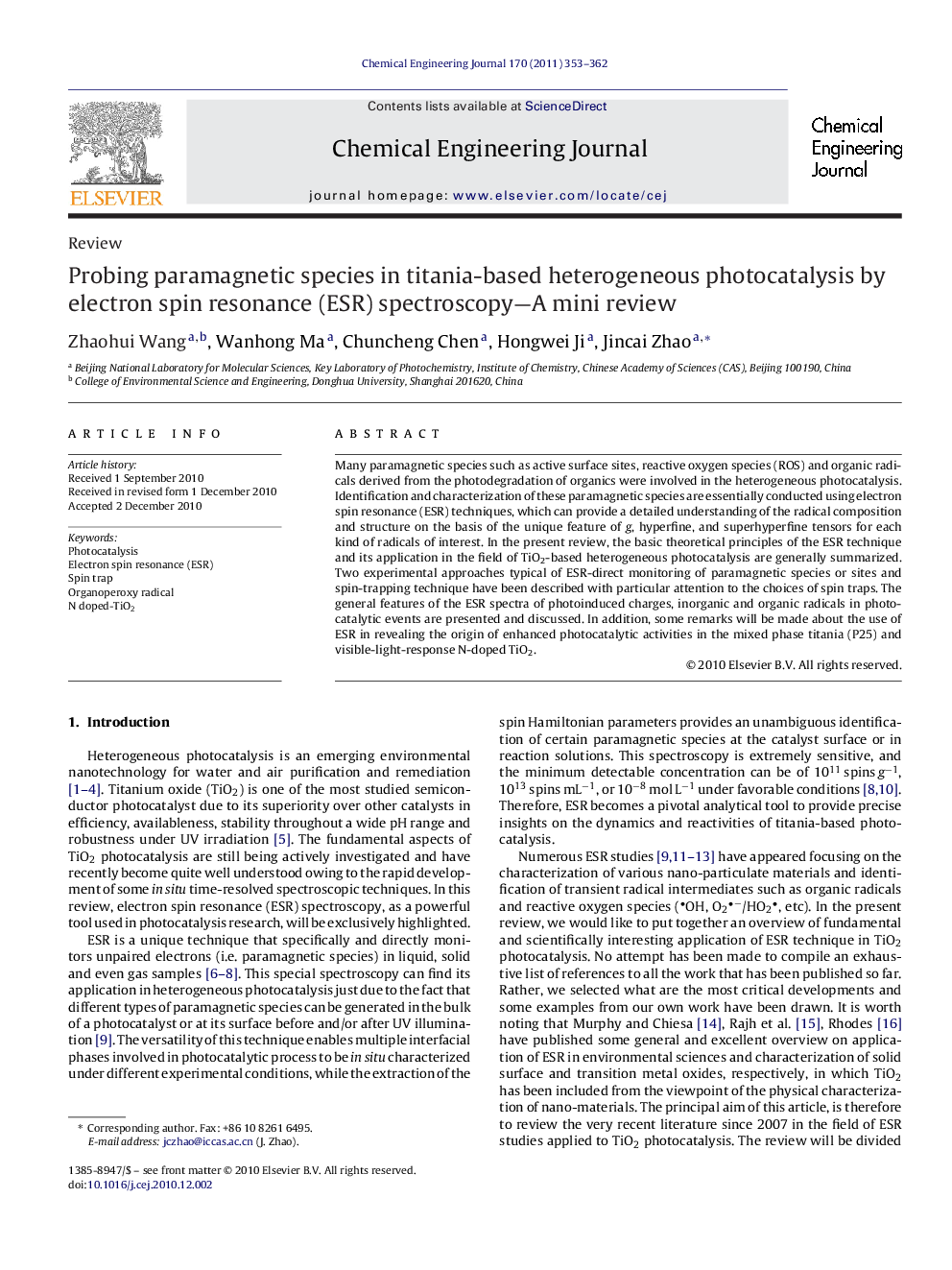| Article ID | Journal | Published Year | Pages | File Type |
|---|---|---|---|---|
| 151121 | Chemical Engineering Journal | 2011 | 10 Pages |
Many paramagnetic species such as active surface sites, reactive oxygen species (ROS) and organic radicals derived from the photodegradation of organics were involved in the heterogeneous photocatalysis. Identification and characterization of these paramagnetic species are essentially conducted using electron spin resonance (ESR) techniques, which can provide a detailed understanding of the radical composition and structure on the basis of the unique feature of g, hyperfine, and superhyperfine tensors for each kind of radicals of interest. In the present review, the basic theoretical principles of the ESR technique and its application in the field of TiO2-based heterogeneous photocatalysis are generally summarized. Two experimental approaches typical of ESR-direct monitoring of paramagnetic species or sites and spin-trapping technique have been described with particular attention to the choices of spin traps. The general features of the ESR spectra of photoinduced charges, inorganic and organic radicals in photocatalytic events are presented and discussed. In addition, some remarks will be made about the use of ESR in revealing the origin of enhanced photocatalytic activities in the mixed phase titania (P25) and visible-light-response N-doped TiO2.
